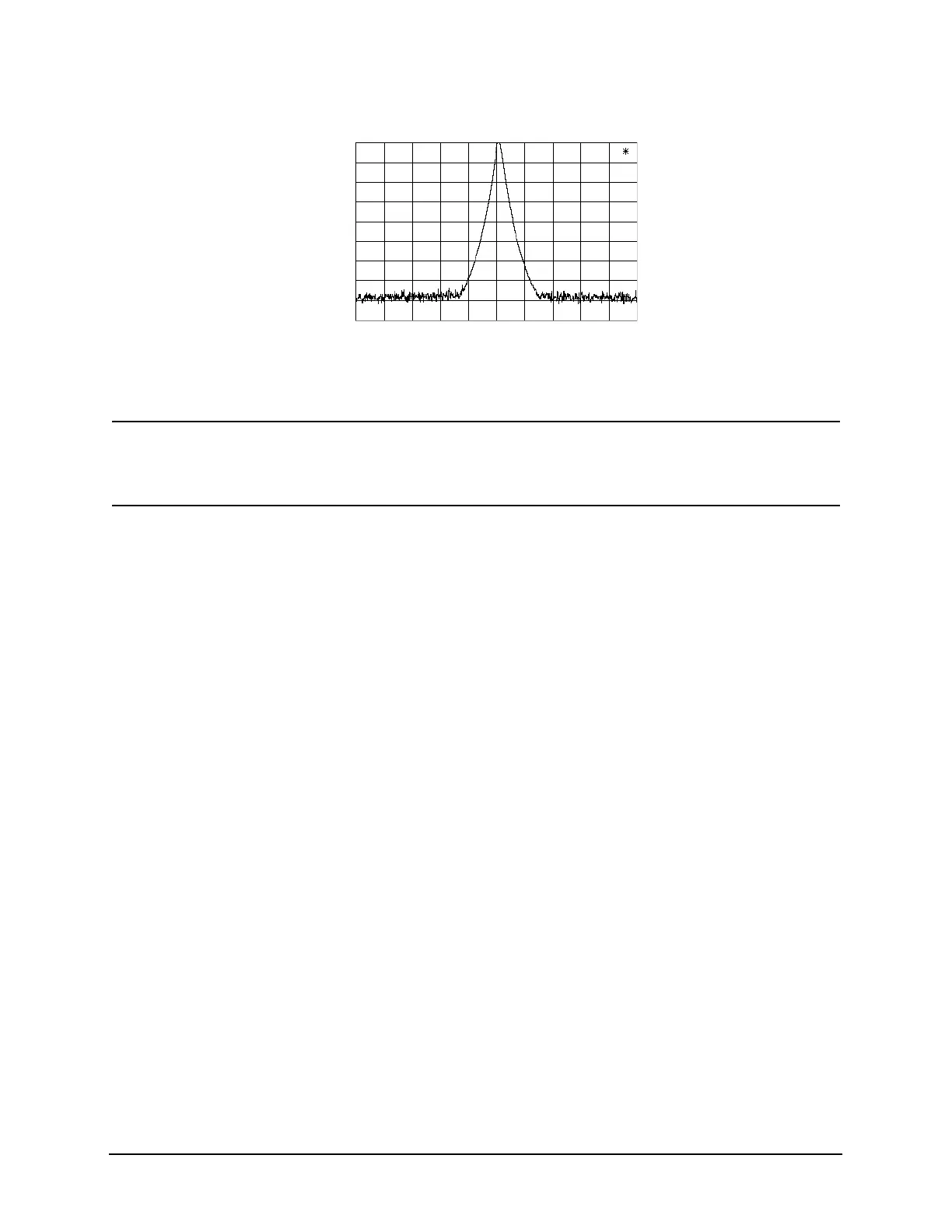205
Concepts
Time Gating Concepts
Figure 15-15 Using Time Gating to View Signal 2 (spectrum view)
Measuring a complex/unknown signal
NOTE The steps below help to determine the signal analyzer settings when using time
gating. The steps apply to the time gating approaches using gated LO and gated
video.
This example shows you how to use time gating to measure a very specific signal.
Most signals requiring time gating are fairly complex and in some cases extra steps
may be required to perform a measurement.
Step 1. Determine how your signal under test appears in the time domain and how it is
synchronized to the trigger signal.
You need to do this to position the time gate by setting the delay relative to the
trigger signal. To set the delay, you need to know the timing relationship between the
trigger and the signal under test. Unless you already have a good idea of how the two
signals look in the time domain, you can examine the signals with an oscilloscope to
determine the following parameters:
• Trigger type (edge or level triggering)
• Pulse repetition interval (PRI), which is the length of time between trigger events
(the trigger period).
• Pulse width, or τ
• Signal delay (SD), which is the length of time occurring between the trigger
event and when the signal is present and stable. If your trigger occurs at the same
time as the signal, signal delay will be zero.

